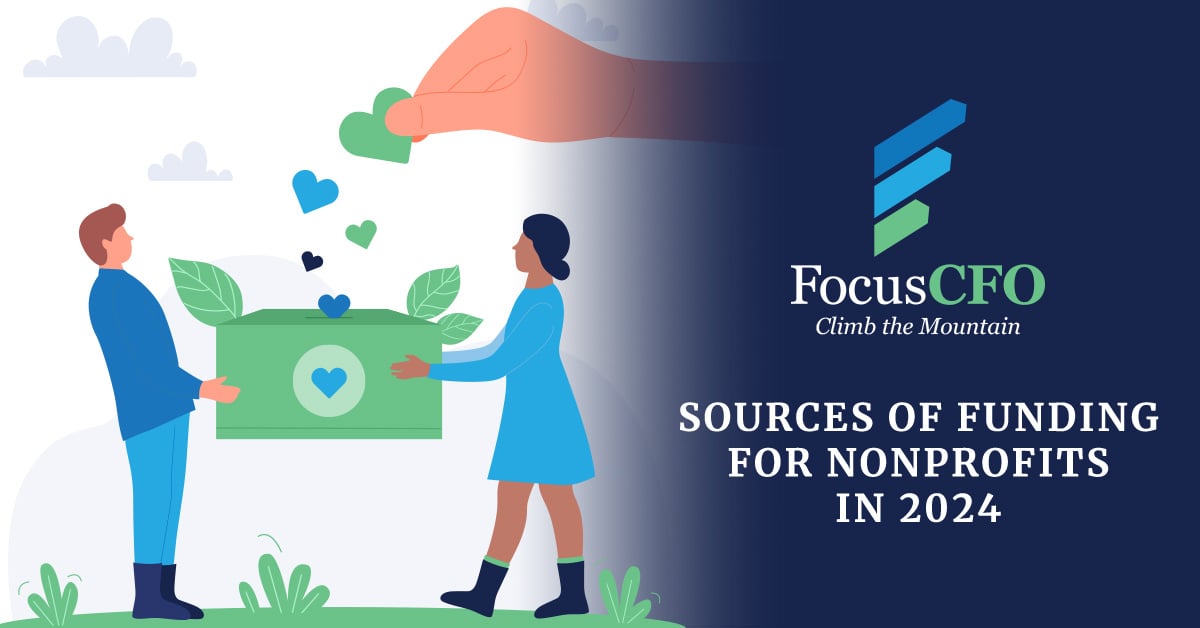The past several years have, at times, felt like economic chaos as we have collectively grappled with everything from inflation to out-of-control housing prices to rising interest rates. We have been warned of recession and then spared, only for the threat to rise again in the next tumultuous news cycle.
Turbulent economic times can be particularly unnerving for organizations in the nonprofit sector, as cash flow management becomes a significant concern. Will people continue to donate in a down market? Will corporate contributions dry up as businesses vie for their own survival?
During these times, the importance of cash flow management rises to the forefront. Much like their for-profit counterparts, nonprofit organizations must ensure they can manage expenses, support operations, and pay both suppliers and employees. That involves making sure enough money is coming in the door on a reliable and consistent basis.
In this article, we will review the various sources of funding available to nonprofits and how they relate to developing a sustainable business model.
Nonprofits: A powerful force in the U.S. economy
While for-profit businesses receive much of the public attention when it comes to the state of the overall economy, we must not overlook the impact of nonprofits.
First, the number of nonprofit organizations has been growing steadily over the past 20 years. This trend continued during the recession of 2007 - 2009: While the number of for-profit businesses and their employment levels declined during that period, the number of nonprofits continued to increase. The most recent data indicates that there are now nearly 2 million nonprofits in the U.S., and together, these organizations contributed $1.4 trillion to the economy and made up 5.6% of gross domestic product. The sector employs nearly 13 million people in the U.S., which is nearly 10% of all private-sector employment. And over 60 million Americans regularly volunteer in service of nonprofit organizations and their missions, which also yields substantial economic impact – to the tune of $122.9 billion per year.
To operate at this scale and create impact at this level, successful nonprofit organizations cannot subsist on passionate volunteers and good intentions alone. They must operate, in many ways, like for-profit businesses, keeping cash flow management top of mind.
At the same time, funding sources for nonprofits are distinct from their for-profit counterparts.
Contributions, Gifts and Grants: Unlocking Individual and Organizational Funding Sources
This is the primary source of revenue for most non-profits and requires an equal amount of effort in development activities. Consider the following when determining how to solicit contributions for your cause:
- Who are the people and organizations with interests or ties to your cause? Corporate and individual giving for the general good of the community that your organization supports is an important source of funding.
- Who are you serving? Does your organization have members? Consider how you will engage them for ongoing financial support.
- Have you explored how grants could support your organization? An entire industry has been developed around grants and grant proposal writing. Seek an experienced professional for advice.
- How could other nonprofits support your organization? The most well-known example of this is the United Way.
- Could your vendors become a potential resource? While the primary goal in your relationship with your vendors is to receive the best service for the best price, you may find that they will support your cause when they get to know your organization and your mission.
Building a Sustainable Business Model: The key to long-term nonprofit success
Organizations and individuals contributing to a nonprofit want to trust that they are supporting an organization that is being run in a financially prudent manner and one that will be able to fulfill its mission in the future. Having a sustainable business model and documenting realistic, justifiable projections that show the ongoing viability of the nonprofit are crucial to raising funds from any source. Monitoring performance compared to the business model and plan (both financially and in terms of service provided) and updating the model as circumstances change are important to maintain funding sources and to ensure the sustainability of the nonprofit organization over the long term.
At FocusCFO, our Fractional CFOs help nonprofits across the country build strategic financial plans and solidify their long-term sustainability and success. Learn more about how we can support your organization here.






